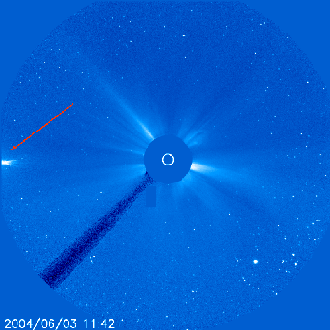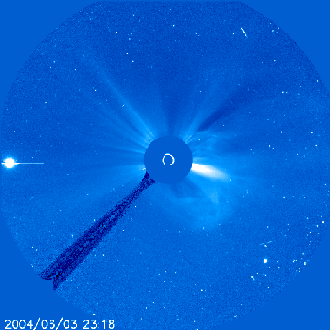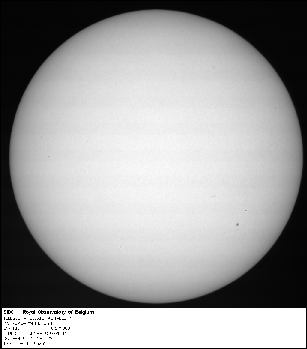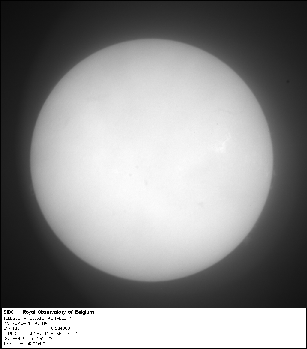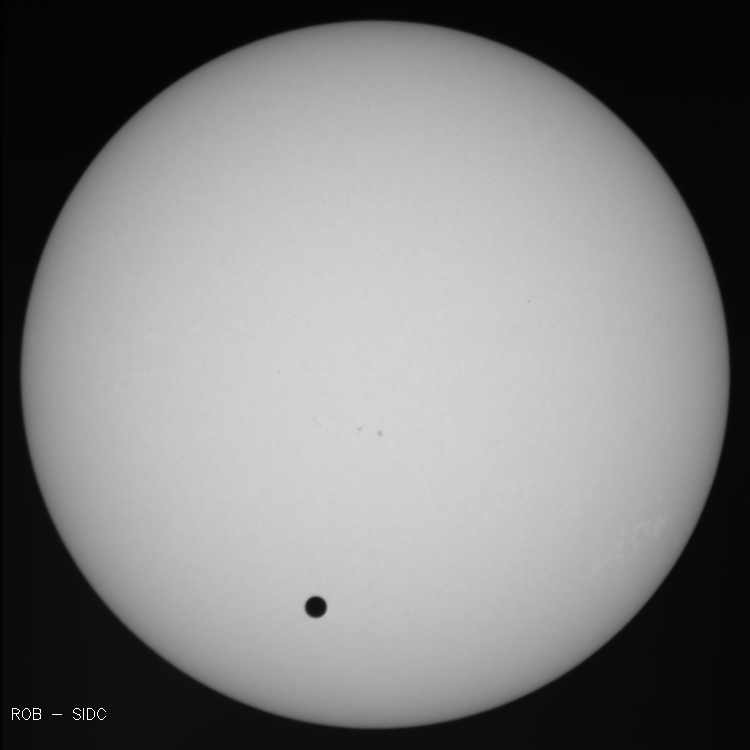In the morning of June 8, 2004 - visible in the whole of Europe - we can witness a rare astronomical event: the passage of Venus in front of the Sun. This is indeed rare: the last passage took place in 1882 and was only seen partially in Europe.
Reminder: Never look at the Sun without eye protection!
From 5:19 UT (7:19 local time) onwards, the planet Venus shall be visible as a moving black dot in the lower part of the solar disk. Venus will appear on the left and will glide away on the right at 13:23 UT, at the west side. During that period, the planet is located on one line with the Sun and the Earth. In 8 years from now on, they will be in the same configuration. After that, we have to wait until 2117...
Back in 1761 and 1769, the passages of Venus were crucial for determining the distance between the Earth and the Sun, i.e. 1 Astronomical Unit (AU), the basis of all astronomical distances. Later, it turned out that these measurements were not so accurate as expected. The culprit was the black drop (gutta negra) effect that manifests itself at the moment Venus touches the solar disk. The value then obtained for the AU, which can now be determined with much higher precision using modern techniques, was however a reasonable guess.
|
|
|
On 3 June, Venus entered the field of view of the LASCO/C3 coronagraph.
|
|
|
|
The picture of the Sun in the middle is taken by the Ukkel solar telescope in H-alpha. The picture on the left is the Sun in white light, the dark dots are the sunspots as they appear in the photosphere. Watching these pictures, you can witness the passage of Venus in real time. The pictures will be automatically refreshed every 60 seconds. On the right a picture of the Sun made by USET's white light telescope on 8 June at 08:21UT.
Have also a look at our Dutch / French website offering an overview of activities organised by the planetarium and the Royal Observatory of Belgium in the framework of the Venus Transit.
Underneath a few pictures from the event as observed by the heliometer (the same instrument with which J.C. Houzeau observed the previous Venus transit in 1882!) and the USET-telescopes.






